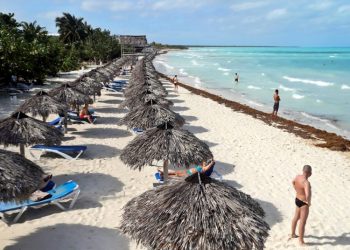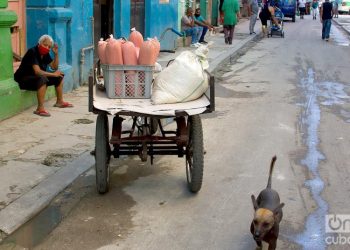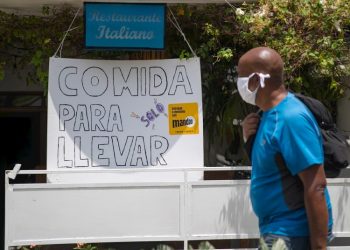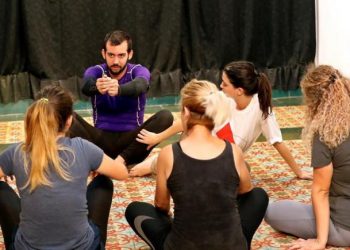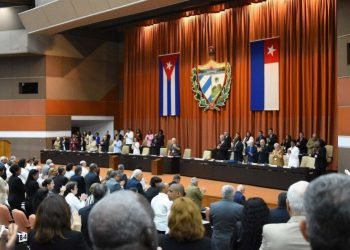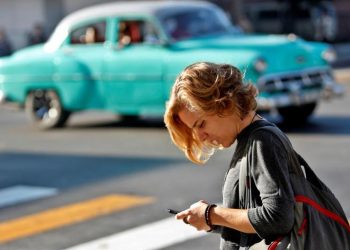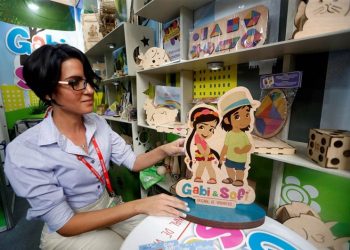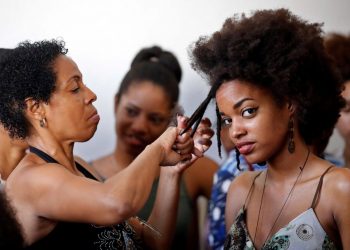Sun, beach and safety: Cuba’s proposal in times of pandemic
At first glance, it is hard to believe that we are in 2020: several people sunbathe on the sand, others laugh with cocktails in hand and a couple embracing walk near the water. All with their faces uncovered, forgetting for a few days that a pandemic is still raging outside. The only clue that COVID-19 is still a reality are the mandatory use of masks for Cuban hotel personnel, governed by a protocol that includes taking temperature and hand and foot disinfection at the entrance, which employees kindly make guests comply with, without exceptions. A radiant sun smack in the middle of winter, paradisiacal beaches and sanitary safety are the benefits with which Cuba wants to attract a foreign tourism increasingly necessary to revive its battered economy, now even more affected by the pandemic. Women workers offer disinfectant gel to tourists upon arrival at a hotel on December 2, 2020, in Cayo Coco. Photo: Ernesto Mastrascusa/EFE. “We wanted to come to get away from the cold and Cuba seemed the best option. We could not be happier,” said Lisa, a 30-year-old tourist, who traveled thousands of kilometers from Yakutia, Siberia, to “warm up to the rhythm of salsa.” Traveling to...

